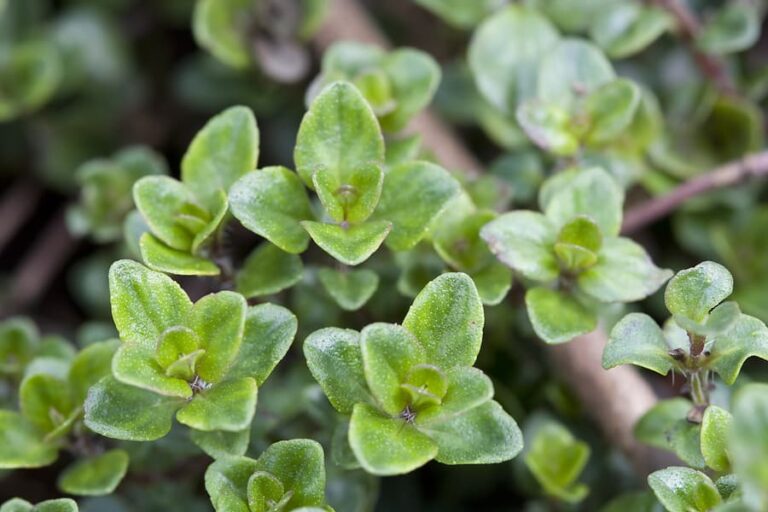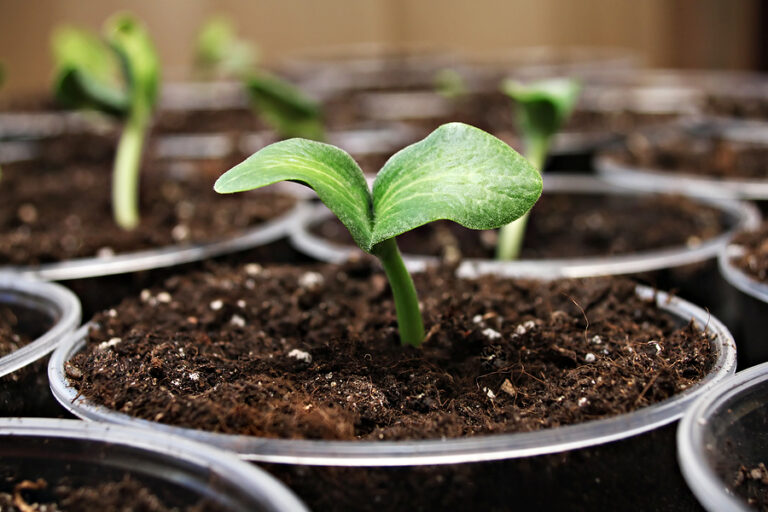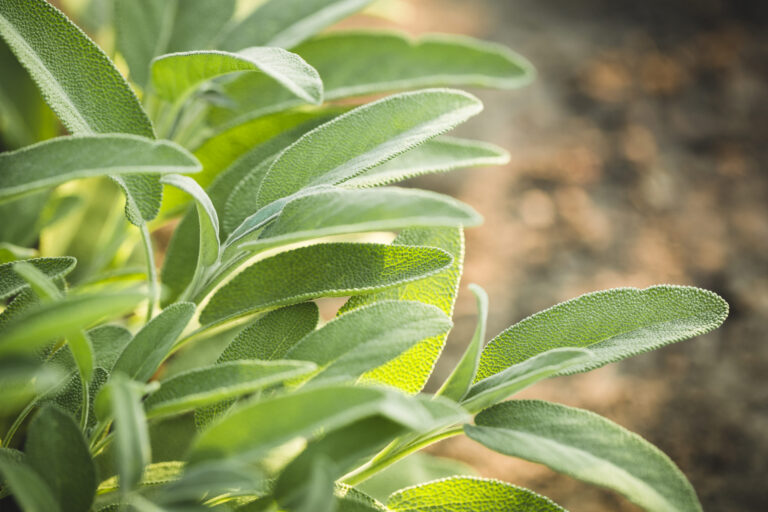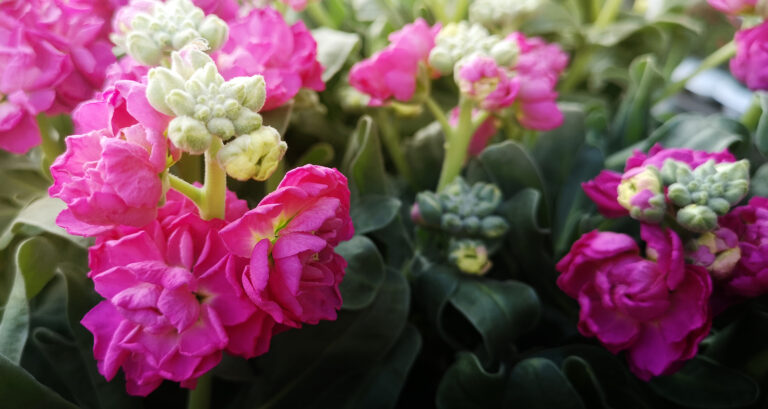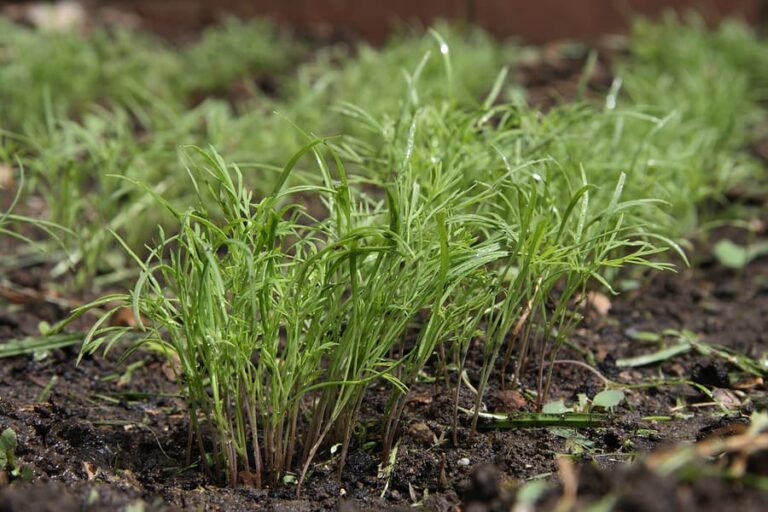How to Plant, Grow, and Prune Raspberries
Raspberries are perhaps the most delicate fruit. This makes them a good choice for home growing and fresh picking. Just harvested raspberries quickly pass from ripe to overripe. It is difficult to find them just right at the market; they should be eaten within a day or two of picking, otherwise, they should be frozen for later use.
Raspberries come in a range of colors—red, black, purple, and yellow-gold. There are two types of raspberries when it comes to harvest time—summer harvest varieties and fall harvest varieties. If you plant some of both, you can extend the harvest for these sweet fruits.
Related article:
Here is your complete guide to growing raspberries.
Best climate and site to grow raspberries
- Plant raspberries in full sun. Fruit yield will be reduced if raspberries are planted in partial sun or shade. (In very hot summer regions, you can plant raspberries where they get some afternoon shade.)
- Chose a location where there is plenty of air circulation but away from a constant breeze or wind.
- Avoid planting raspberries in a windy location; wind can damage the canes.
- Do not plant raspberries where other raspberries or blackberries have grown in the past few years; soilborne diseases such as Verticillium wilt or crown gall can remain in the soil where raspberries have grown recently. Plant away from wild blackberries.
- Do not plant raspberries where blackberries or other bramble berries, tomatoes, potatoes, peppers, eggplants, or roses have grown; these plants share diseases with raspberries.
- Plant in well-drained, loamy soil. Add aged compost or commercial organic planting mix to the soil and turn it under to 12 inches before planting. Do not plant raspberries in waterlogged soil.
- Raspberries prefer a soil pH of 5.5 to 6.5. If the soil is alkaline, acidify the soil to prevent lime-induced chlorosis.
- If the soil is sandy, add plenty of aged compost and organic matter to help retain moisture.
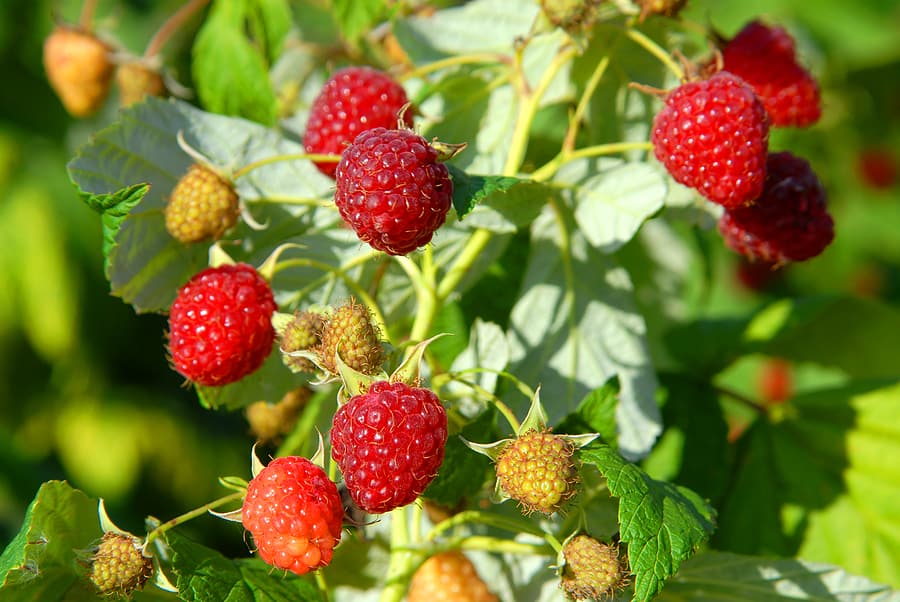
Choosing the right raspberry plant
- Raspberries come in several colors: gold or yellow raspberries and red raspberries are hardy and sweet; black raspberries are flavorful but not hardy and susceptible to disease; purple raspberries are between red and black.
- Raspberries can be divided into summer-fruiting and fall-fruiting (also called ever-bearing). Summer-bearing raspberries grow tall and need support; fall-bearing raspberries are shorter and can be grown with or without support.
- Red, black, and purple berries can be summer- or fall-bearing; gold or yellow varieties tend to fruit in the fall.
- Summer-bearing varieties fruit on last year’s canes. Fall-bearing varieties fruit on this year’s canes. Knowing which you are growing is important when pruning time comes.
- Raspberries can be purchased bare-root or in containers. Each plant will come as a single cane—do not be alarmed.
- Choose one-year-old dormant plants with lots of roots. If you purchase bare-root plants, look for small white buds on the roots; new shoots or suckers will grow from these buds.
- Be sure to select certified virus-free plants; virus infection is the most common raspberry disease.
- Raspberries are self-fertile, so you can plant just one cultivar.
Raspberry yield and how many plants to plant
- Summer-bearing raspberries will produce 4 to 6 pounds of fruit per each 3-foot section of row.
- Fall-bearing raspberries will produce 2 to 3 pounds of fruit per each 3-foot section of row.
Spacing raspberries
- Space red and yellow raspberries 2 feet apart in a row; they will fill in the open space in a year or two.
- Space black and purple raspberries 3 feet apart.
- Space raspberry rows one to two feet apart.

Planting raspberries
- Plant raspberries in spring or fall. In spring, wait until after the last frost to plant.
- Plant summer-bearing raspberries in one row and fall-bearing raspberries in a separate row; this will make pruning much, much easier. Summer-bearing and fall-bearing plants are pruned differently. (See the section on pruning.)
- Erect your supports before planting. Raspberries are commonly grown on a post and wire trellis. (See training below for how to set a post and wire trellis.)
- Soak bare-root plants in compost tea for 20 minutes before planting.
- Dig a trench twice as deep and twice as wide as the root balls of the plants, or dig a hole twice as wide and deep as the individual plant root ball. Raspberries are not planted deeply; roots will be only about 3 inches or so deep at planting time.
- Add a mixture of 2 cups of kelp and 1 cup of bonemeal to the hole prior to planting.
- Set the plants in the trench or hole so that the crown of the plant is level with the surrounding soil; do not bury the crown.
- Backfill the trench or hole with half native soil and half aged compost or commercial organic planting mix. Be sure to firm in the soil so that there are no air pockets around the roots.
- When the plant is in place, cut the top off the cane at about 10 inches above the ground; make your cut just above a node. This pruning at planting time will cause the cane to grow more strongly when spring comes. When new sprouts come up around the original cane in spring, cut down the original cane to the ground; the new shoots will grow rapidly.
- Add a layer of aged compost mulch or leaf mold along the row or around the plant to protect the roots.
- Mulch raspberries planted in autumn prevent frost from heaving plants out of the soil.
Container growing raspberries
- Raspberries can be grown in containers, however, their spreading habit and thorns can be problematic in confined areas.
- Shorter fall-bearing varieties may be the best choice for container growing.
- Choose a container at least 12 inches wide and deep with good drainage. Use an organic potting mixture.
- Plant two or three canes together in a single container
- Repot raspberries every year when the plants are dormant.
Raspberry care, feeding, and watering
- Keep the soil evenly moist throughout the growing season; avoid wetting the foliage; splashing water can spread fungal disease.
- Water twice a week in warm weather as berries fatten and ripen.
- Feed raspberries a balanced organic fertilizer in late winter to promote growth and fruit in the coming season. Feed raspberries aged compost throughout the season—mulch with aged compost.
- Raspberries have shallow roots; protect shallow roots with a thick mulch of aged compost. Mulch will also keep down weeds and slow soil moisture evaporation.
- Mulch a thick layer of aged compost at least twice a year.
- Protect raspberries from birds as berries ripen; place plastic netting over the plants.
- If berries are still on the plant when fall frost threatens, drape floating row covers over the plants.
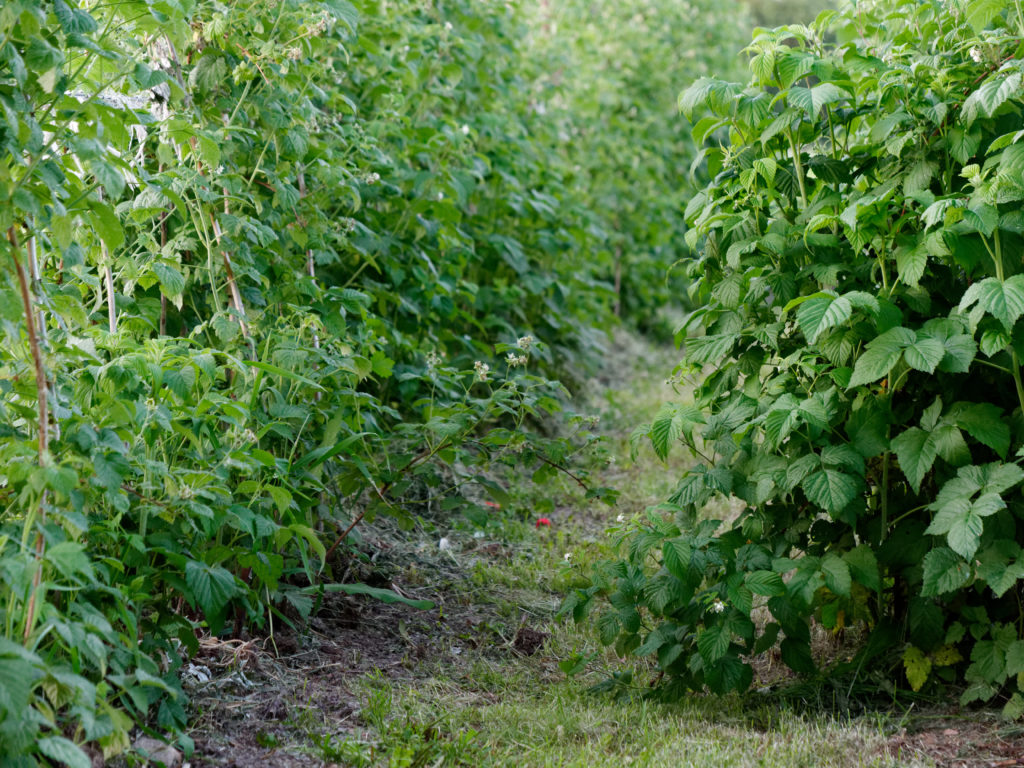
Training raspberries
- Give raspberry plants support. Trellis raspberries so the plants are easy to harvest, and canes and berries are exposed to air and sunlight; this will decrease disease.
- A trellis of wires stretched between posts will be enough to keep canes off the ground. Stretch wires at one to two-foot intervals between posts set firmly in the ground. Set wires at 2 feet, 3 feet, and 4 feet above the ground. Use 7-foot posts set 2½ deep. Tie the canes to the wire
Pruning raspberries
- Not all raspberry varieties are pruned in the same way.
- For fall-bearing and ever-bearing raspberries, cut all old canes to the ground when they are finished fruiting.
- For summer-bearing red raspberries that produce fruit on two-year-old canes, cut away old brown, fruit-producing canes after harvest. Leave the young, new canes to produce fruit the following summer. In late winter, remove the smallest canes leaving three to six sturdy canes.
- Black and purple raspberries produce fruit on side branches that grow from older canes. Prune away canes that have produced fruit shortly after the fruit has been harvested (in late summer). Snip off the growing tips of new canes when they are 3 to 4 feet tall; this will make them grow side branches that will later bear fruit. During the dormant period, remove the smallest canes on the plant leaving 4 to 6 sturdy canes per 1 foot of row. Cut away spindly side branches and trim the remaining side branches back to 8 to 10 inches long; these will bear fruit next summer.
- A note about pruning at planting time: When a new plant is set in place, cut the top off the cane at about 10 inches above the ground; make your cut just above a node. This pruning at planting time will cause the cane to grow more strongly when spring comes. When new sprouts come up around the original cane in spring, cut down the original cane to the ground; the new shoots will grow rapidly.
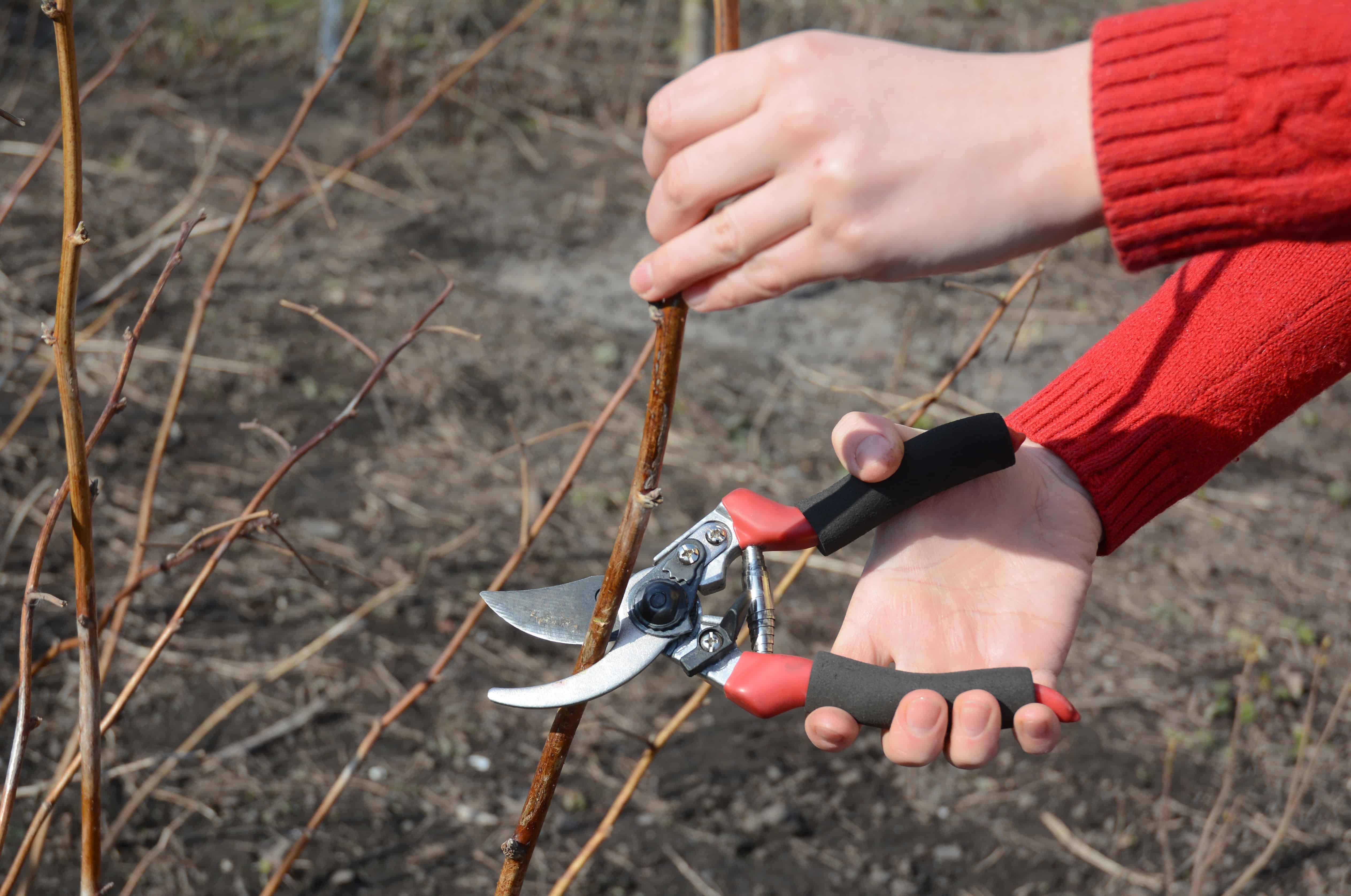
How and when to prune raspberries
How you prune a raspberry plant depends upon when the plant bears fruit—once a year or twice a year.
Raspberries can be divided into two types by when they bear fruit: (1) one-crop, summer-bearing raspberries also called standard raspberries and (2) two-crop, summer and fall-bearing raspberries, also called ever-bearing raspberries.
Red raspberries can bear one crop or two crops per season depending upon the variety. Yellow raspberry varieties bear two crops per season. Black and purple raspberry varieties bear one crop per season.
Raspberry canes are biennials—meaning they live for two years (raspberry canes grow from suckers on root-like underground stems or by cane tips that bend to the ground and root). One-crop summer-bearing raspberries produce fruit on canes that grew the previous summer and over-wintered. Two-crop, ever-bearing raspberries produce fruit on canes that grew the previous summer and also on new canes that grew during the current season.
How to prune one-crop, summer-bearing raspberries
Raspberry plants are pruned by cutting back canes after they bear fruit.
Cut back one-crop, summer-bearing raspberry canes as soon as the harvest is over. Cut these just harvested canes down to the ground.
Do not prune back new canes that have emerged during the summer. After the old, fruit-bearing canes have been cut back, train the new canes to a post or to one or two horizontal wires. These canes will produce a crop next year.
If you are growing raspberries in a row, thin out the new canes to leave 6 inches between the remaining canes; that way your fruit-bearing canes will not be too crowded next season.
How to prune two-crop, ever-bearing raspberries
Two-crop, ever-bearing raspberries produce fruit on the top third or ends of new canes in the autumn of their first season, and laterally on the lower two-thirds of the same canes in the spring of their second season.
Prune off the top of the cane of a two-crop raspberry that has borne fruit; cut the cane back to the lowest point on the cane that bore fruit (usually about 45 inches from the ground). Leave the bottom of the cane to fruit the following spring or early summer. After the lower portion of the cane has fruited in the second year, cut those canes back to the ground. At the same time train the new canes that will bear in the fall up a stake or trellis.
The lower two-thirds of canes of ever-bearing raspberries that overwinter to bear fruit the next spring or early summer are commonly staked or trellised. If you do not want to stake or trellis ever-bearing raspberries, cut back all of the canes after the fall harvest; that means you will get only one harvest from your two-crop, ever-bearing raspberries.
Propagating raspberries
- Lift young shoots and replant them to make new plants. Dig up a healthy shoot or sucker with a garden fork; make sure some roots are attached to the shoot. Cut the sucker and roots away from the mother plant. Replant it immediately in a pot or elsewhere in the garden; do not let the roots dry out.
- Do not propagate diseased plants; instead, purchase new certified disease-free plants.
Harvesting raspberries
- Pick raspberries when the fruits are ripe. Ripe fruit will be soft and come away from the plant with little effort. Unlike blackberries, the plug or core remains behind on the plant when you pick the fruit.
- Unripe raspberries will not ripen off the plant.
- Place harvested fruit in a shallow container—about three or four fruits deep—to avoid crushing the fruit.
Storing raspberries
- Raspberries will keep just two or three days in the refrigerator. Freeze berries you cannot use immediately.
- Slightly under-ripe berries are better for cooking or freezing.
- Ripe berries left on the bush will rot. This will also cause unripe berries still on the plant to ripen more slowly.
Raspberry pests, diseases, and problems
- Spray plants with compost tea when fruits form to help prevent gray mold. Spray early in the day to allow plants to dry for sunset.
- If powdery mildew or cane disease was a problem last year, spray plants with lime sulfur in spring when buds begin to form.
- If fruitworms were a problem last year, spray plans with rotenone or pyrethrins in spring when buds appear.
- Yellow patterns on leaves or crumbly berries can be a sign of viral disease. Remove infected plants from the garden.
- Orange pustules are a sign of fungal rust disease. Trim off diseased leaves. Spray the plant with compost tea or a fungicide.
- Cane tip wilt may be a sign of cane borer beetles; remove the infested canes or plants.
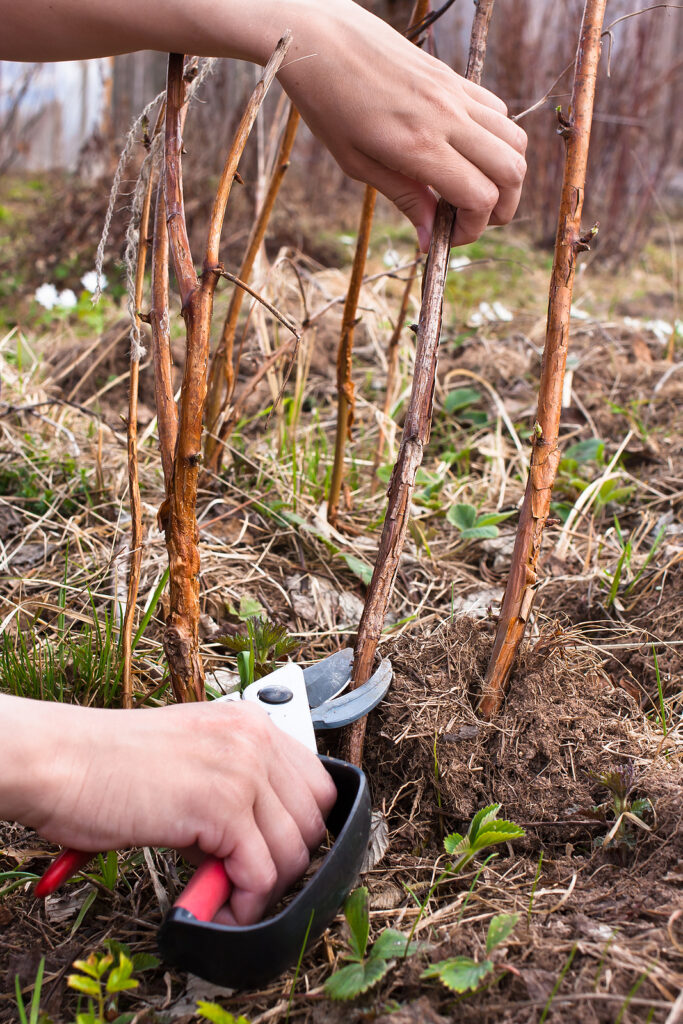
Fall and winter raspberry care
- Remove spent canes in late summer or fall after harvest is done.
- Tip-prune overwintering summer-bearing canes. Remove all of the fall-bearing canes that have just fruited.
- Keep raspberry rows and the garden free of dropped leaves and fruit; these can harbor disease over the winter.
- Mow between rows to keep raspberries from creeping out of their rows.
- Rake mulch away from plants in autumn; this will prevent mice from nesting under the mulch. After the first freeze, rake the mulch back over plant roots.
- Control the width of raspberry rows in winter.
- Prune canes in winter if they were not pruned right after harvest.
Raspberry varieties to grow
There are hundreds of varieties of raspberries.
- Red raspberries are the most common.
- Yellow or golden raspberries are a mutation of red raspberries.
- Black raspberries–which are actually blue-black–are firmer and have more seeds than red or yellow raspberries.
- Purple raspberries are crosses between black and red raspberries.
- Everbearing (also called fall-bearing) varieties give an autumn crop as well as a summer crop.
Choose. Look for raspberries that are full, plump, and meaty. Ripe raspberries will be brightly colored. The best way to know for sure is to taste one. A raspberry that has a soft haze or soft floss to its skin, is sweetly perfumed, and does not leave a juice stain is perfect—but must be eaten immediately.
Ripe raspberries will slip off their short stem easily. Raspberries with green caps attached are not ripe. They were picked too early.
Stay away from flattened, shriveled, or moldy berries and berries in containers that are too closely packed. If there are juice stains on the container, the berries may be overripe.
Store. Keep raspberries in a shallow bowl or container and avoid crushing or bruising them. Don’t let them sit out in the sun. Don’t wash raspberries until you are ready to use them or they will lose their texture.
If you are picking your own raspberries, look for plants that have never been treated with chemicals, wash your hands, pick each berry gently with your thumb and forefinger, and deposit the berry directly in your mouth.
Here are some raspberry varieties to be on the lookout for—listed by color:
Red raspberry varieties:
- Amity: large dark red, excellent flavor.
- Autumn Bliss: everbearing with very large red berries, great flavor.
- Bababerry: everbearing, large, firm red.
- Boyne: medium-sized red, summer bearer.
- Canby: large, bright red, summer bearer.
- Chilcotin: very large, firm, red, excellent flavor.
- Chilliwack: very large red with fine flavor, summer bearer.
- Fallred: everbearing, large, firm red, great flavor.
- Heritage: everbearing red, small and tasty, summer and fall.
- Indian Summer: everbearing, large, tasty reds.
- Kiska: small red with good flavor, summer bearer.
- Latham: red, large, an old standard, summer bearer.
- Meeker: large, firm bright red, summer bearer.
- Newberg: large, light red, summer bearer.
- Scepter: red, good quality, summer and fall.
- September: everbearing, small to medium-sized red with good flavor. Fall bearer.
- Southland: red, very good flavor, summer and fall.
- Summit: everbearing, large red with very good flavor.
- Sumner: large red with excellent flavor; summer bearer.
- Tulameen: very large, firm red, excellent flavor, summer bearer.
- Willamette: large red, very good flavor, summer bearer.
Yellow raspberry varieties:
- Amber: golden, excellent taste, summer bearer.
- Fallgold: everbearing yellow, large fruit, good quality; fall bearer.
- Golden Summit: everbearing, medium-size yellow, great flavor.
Black raspberry varieties:
- Black Hawk: black, firm berry, good quality.
- Bristol: black, very large, excellent eating. Midseason.
- Cumberland: black, large, old favorite, good eating. Late season.
- Jewel: black large. Early season.
- John Robertson: black, good for jam and jelly.
- Logan: black. Early season.
- Morrison: large blackberries.
- Munger: medium-size black. Very popular. Midseason.
Purple raspberry varieties
- Brandywine: purple, firm, large, very tart. Late season.
- Clyde: purple, soft, large, tart; use for jams and jellies. Late season.
- Sodus: large purple, rich flavor, for pies.
More raspberry varieties
- Cold-hardy varieties: ‘Boyne’, ‘Nova’, ‘Nordic’.
- Heat tolerant varieties: ‘Dorman Red’, ‘Bababerry’, ‘Southland’.
- Red raspberries include ‘Algonquin’, ‘Chilliwack’, ‘Canby’, ‘Heritage’, ‘Meeker’, ‘Newburgh’, ‘September’, ‘Southland’, ‘Willamette’.
- Black and purple raspberries include ‘Allen’, ‘Jewel’, ‘Royalty Purple’. ‘Bristol’, ‘Black Hawk’, ‘Cumberland’, ‘Munger’.
- Yellow (gold) raspberries include: ‘Fallgold’, ‘Anne’.
- Fall-bearing (also called ever-bearing) raspberries include ‘Autumn Bliss’, ‘Heritage’, ‘Caroline’, ‘Autumn Treasure’, ‘Belle de Malicorne’.
- Summer-bearing raspberries include ‘Tulameen’, ‘Meeker’, ‘Latham’, ‘Taylor’, ‘Cascade Delight’, ‘Glenn Fyne’, ‘Glen Fyne’, ‘Glen Prosen’, ‘Leo’, “Milling Jewel’.
Related articles:
Planning the Home Fruit Garden
Garden Planning Books at Amazon:
- Vegetable Garden Almanac & Planner
- Kitchen Garden Grower’s Guide Vegetable Encyclopedia
- Vegetable Garden Grower’s Guide
- Tomato Grower’s Answer Book
More fruit-growing articles:
Learn how to plant, grow, prune, and harvest your favorite fruits. Click below for all you need to know.
- Apple
- Apricot
- Avocado
- Banana
- Blackberry
- Blueberry
- Cantaloupe
- Chayote
- Cherimoya
- Cherry
- Citrus
- Clementine
- Cranberry
- Currants
- Elderberry
- Feijoa
- Fig
- Gooseberry
- Grape
- Grapefruit
- Guava
- Kiwifruit
- Kumquat
- Lemon
- Lime
- Loquat
- Mandarin
- Mango
- Melon
- Mulberry
- Muskmelon
- Nectarine
- Olive
- Orange
- Papaya
- Passion Fruit
- Peach
- Pear
- Persimmon
- Pineapple
- Pineapple Guava
- Plantain
- Plum
- Pomegranate
- Pumpkin
- Quince
- Raspberry
- Strawberry
- Tangelo
- Tangerine
- Tangor
- Watermelon

